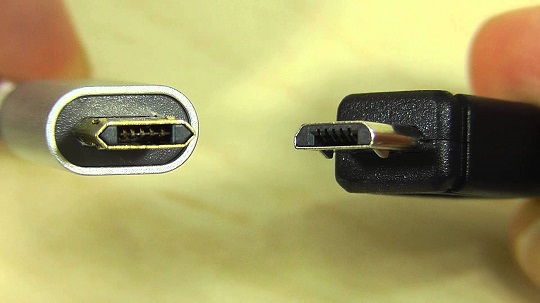The difference between Micro USB and USB type C can be detected mainly through functionality and some minor aspects of the physical construction.
Most manufacturers have today moved into production of the USB type C for their devices.
This is a move away from the much popular industrial standard Micro USB or type B.
USB which standards for Universal Serial Bus was developed as a way to unify connection cables between devices to allow transfer of data.
USBs also transfer energy to charge the devices they are connected to.
To simplify all this, your Android phone or Bluetooth speaker has a USB cable.
One end of the cable has standard USB type A that fits into a laptop and the other end contains another USB which is smaller in size that fits into your phone or speaker. That is what is referred to as a micro USB or USB Type B.
Let’s move back to USB type A. Like every innovation, the standard USB which is rectangular in shape has gone through various innovations beginning with USB 1.0 created in the early 1990s to the superior USB 3.2 processes speed up to 20Gbps.
Most laptops created today carry at least one USB 3.0 that allows faster data transfer and provide the most popular USB 2.0 in other positions.
This side that fits into your phone has always been the micro USB (type B) and has been upgraded to the Type C for some devices.
To be more specific, the end of your USB cable that fits into your phone is called the Type B male and where it enters on your device is called the Type B female.
[ot-video][/ot-video]
There is a physically noticeable difference in the micro USB and USB type C.
The micro USB contains hooks on one side and can only be entered into a device in a specific way.
The type C is slightly bigger in size and doesn’t have any hooks on its sides.
This allows it to enter into a device any way you put it in.
Type C takes advantage of USB 3.2, 3.1 and 3.0 allowing you to transfer data at speeds of 5 to 20Gbps.
When it comes to charging, it can deliver up to 100W of power. Type C is designed as a one-size-fits-all to allow it to replace connector cables in smartphones, game controllers, HDMI, cameras, laptops, or any other devices.
More on Tech:
How to download all your Instagram photos, videos and stories
How to tell if you have a virus on your Android

